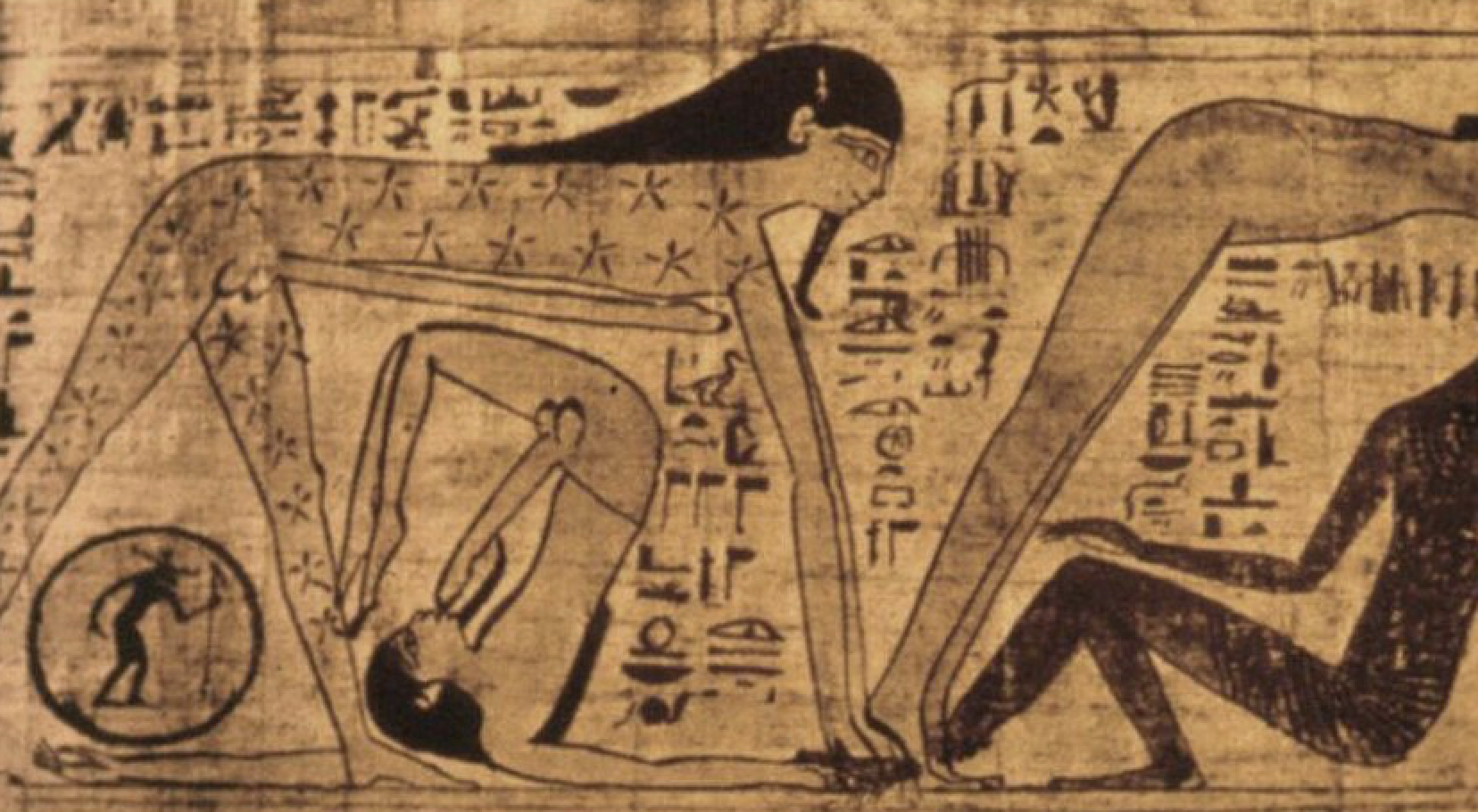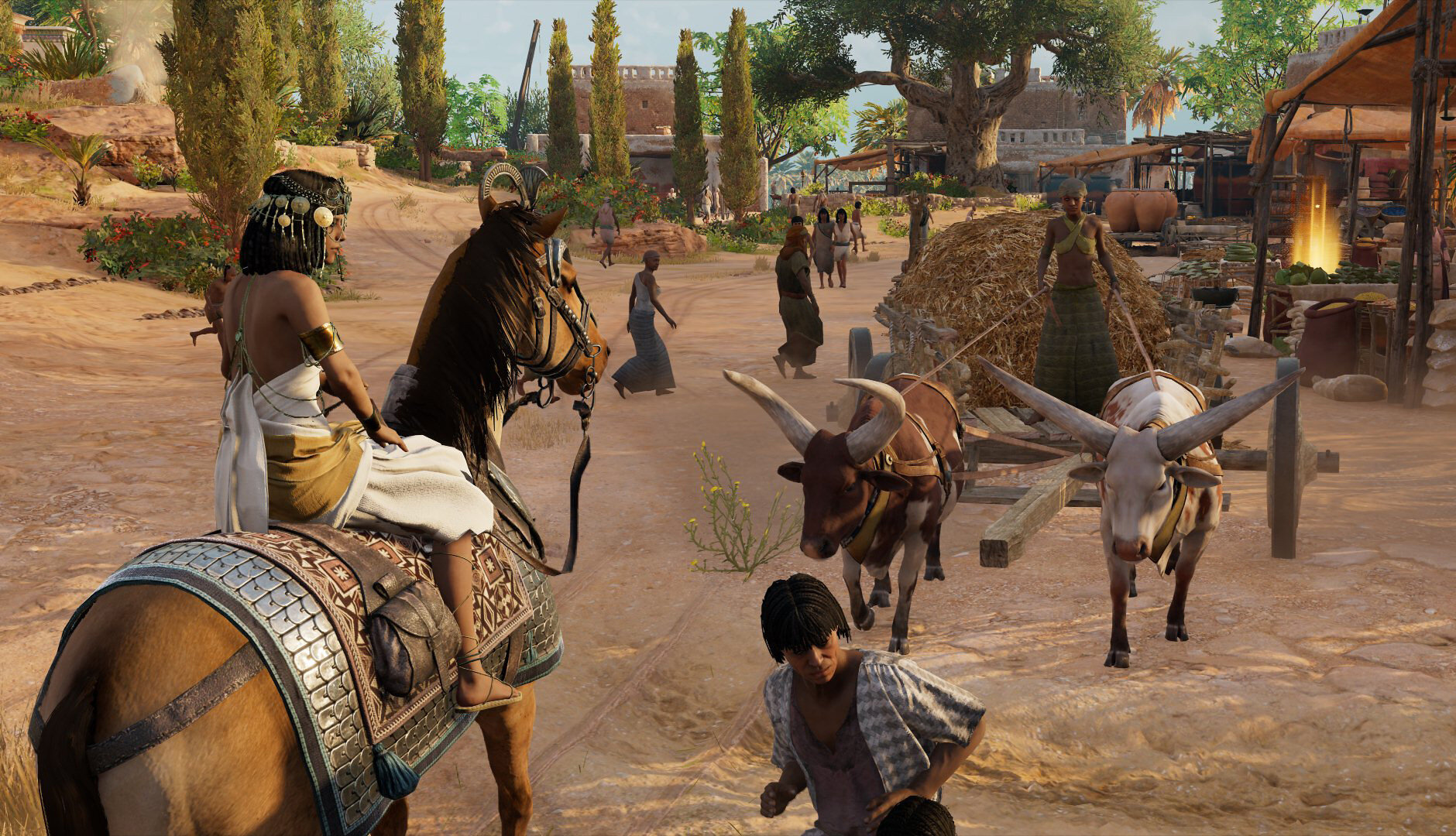From speculation that he was gay to that infamous graffiti, we investigate Pharaoh Hatshepsut’s most-trusted advisor, who rose from nothing to become one of the most powerful men at the time.
Senenmut was certainly Hatshepsut’s right-hand man — but did their relationship extend into the bedroom?
Were they or weren’t they? Egyptologists have debated whether or not Hatshepsut, the woman who became pharaoh, and her right-hand man, Senenmut, were an item.
Senenmut, who was most likely about 20 years older than Hatshepsut, started out as a nobody. He didn’t come from a respected family — in fact, he was the son of a low-level official in a backwater village 15 miles from the capital city of Thebes (modern-day Luxor). Yet somehow he was chosen for a position at the palace, overseer of the large hall. In this role, Senenmut was in charge of the audience hall, where the king and queen would sit upon their thrones and receive visitors and hear petitions. And that was just the beginning.
“Archaeologists found a drawing of a man and woman having sex doggie-style.
Some think it was a political satire of who really wore the pants, so to speak, in the relationship between Hatshepsut and Senenmut. ”
Senenmut was soon promoted to overseer of the two granaries of the god Amun, a position that gave him access to great wealth and made him an economic authority. In addition to having control of the religious storehouse of wealth, Senenmut also became steward of the king’s and queen’s palaces, thereby controlling vast portions of the Ancient Egyptian economy.
It’s hard to imagine how one man could do so many things, but Senenmut must have proved himself imminently capable, for he continued to collect titles, becoming responsible for more and more aspects of the state religion and government.
Royal tutors like Senenmut were depicted in this strange, blockish style — perhaps to emphasize their role as protectors of their charges
Wet Nurse for the Brain: Tutor to Neferure
One of the aspects of his illustrious career of which Senenmut was most proud was his role as tutor to Thutmose II and Hatshepset’s daughter, Neferure. It seems he wasn’t allowed to depict himself in the presence of Pharaoh Hatshepsut, but he commissioned numerous statues showing him as tutor to little Neferure — a way of declaring his connection to the royal family.
“The title for the royal tutor in Egyptian is mena nesut, which essentially means ‘male breast for the king’; that is to say, it is the masculine version of a wet nurse whose milk provided an infant with nourishment and protection against disease,” Kara Cooney writes in The Woman Who Would Be King, a marvelous account of Hatshepsut’s life. “The Egyptians believed that a wet nurse became related to her charge through the milk she fed the baby — in a sense, artificially creating blood relations.”
In a similar sense, a male tutor nourished the mind of his young charge, pretty much becoming part of the family. Senenmut was such a father figure to young Neferure that many have speculated that she was actually his child instead of sickly Thutmose II’s.
“Much ink has been spilled on conjectures about the relationship between Hatshepsut and Senenmut,” Cooney writes, “however, there is no clear indication that Senenmut was anything more than Neferure’s tutor and protector, albeit a very close one.”
Does this naughty graffiti show Senenmut taking King Hatshepsut from behind?
The Case of the Doggy-Style Graffito
After Thutmose II died, Hatshepset’s nephew Thutmose III became pharaoh. Because he was still a child, Hatshepsut acted as regent for the Egyptian throne, ultimately declaring herself co-pharaoh.
Hatshepsut led a colorful early life, including a period when she acted as a “wife” to the chief god of the Egyptian pantheon
SHE DID WHAT TO THE STATUE?!
As ruler of Egypt at a time of great prosperity, Hatshepsut launched numerous construction projects, including the amazingly modern-looking Deir el-Bahari, her funerary temple, in the mid-1400s BCE. A crude drawing found nearby has launched a thousand speculations on the relationship between Hatshepsut and Senenmut.
Senenmut wanted to be close to his queen in the afterlife. His tomb chapel sits in the hills overlooking Deir el-Bahari, the Mortuary Temple of Hatshepsut
When archaeologists excavated the tombs in the hills above the Mortuary Temple of Hatshepsut, they were, I’m sure, delighted to find a drawing of a man fucking a woman from behind. Surely this was a political satire of who really wore the pants, so to speak, in the relationship between Hatshepsut and Senenmut.
But there’s nothing to mark the woman as Hatshepsut — no crown, no label — or anything that points to the man being Senenmut, for that matter. It was just too good of a story to pass up.
While that famous graffito might not reveal that the pharaoh and her trusted advisor were intimate, there are other clues: Senenmut’s image was sneakily included in parts of Hashepsut’s mortuary temple, and his sarcophagus was of a matching pair with Hatshepsut’s.
There’s one other fact that raises suspicions about Senenmut’s connection to his female king, Cooney points out: “Not one of his dozens of statues, reliefs, and temple depictions records the existence of a family of his own,” she writes. “Without a doubt, if anything should make us wonder about the nature of his relationship with Hatshepsut, it is his lack of a wife. All Egyptian elites married.”
Even if Senenmut was gay — and there might not have been anything wrong with that! — he probably would have still married. Did Hatshepsut just want him as a lover all to herself?
Was Senenmut Gay?
Perhaps Senenmut just preferred the company of men. “The ranks of Egyptian elites undoubtedly included some men with same-sex desires, and some of these men might even have been able to talk of their sexual interests openly,” Cooney writes.
But assuming that was the case, evidence indicates that gays in Ancient Egypt would have still married, in the hopes of having sons to pass on their legacy.
Maybe Hatshepsut insisted she have Senenmut all to herself.
Portraits found in Senenmut’s tomb present a less-flattering, probably more-realistic view of what he looked like
What Did Senenmut Look Like?
The statues of Senenmut as tutor to Princess Neferure show him as young and idealized. But the portraits in his tomb are probably more accurate: They “show him as a timeworn man with a hooked nose, lines etched into the skin around his mouth, a flabby, weak chin, and fleshy lips,” Cooney writes, adding, “If these latter images are to be believed, he was not a handsome man.”
Despite being one of the greatest royal advisors in Ancient Egypt, Senenmut was left with an unfinished tomb and an empty, shattered sarcophagus
A Sad End for Senenmut
Whether or not Hatshepsut and Senenmut were lovers, it’s obvious he wanted to be near her in the eternity of the afterlife. While his tomb chapel sits in the hills overlooking the Mortuary Temple of Hatshepsut, he planned to have his body buried in a separate tomb closer to hers. To have a separate location for the tomb, instead of digging it below the funerary chapel, was a right that had previously been reserved for royalty.
There’s evidence Senenmut lived for about 20 years after Hatshepsut’s death, but no records show that he retained his high position. It’s believed he lost much of his prestige after his beloved perished — and Thutmose III’s subsequent attempt to erase Hatshepsut’s kingship from history certainly wouldn’t have helped.
Thutmose III, the a-hole who tried to wipe Pharaoh Hatshepsut’s reign from history
Senenmut’s tomb was left unfinished and sealed without his corpse. His sarcophagus was dragged up to his tomb chapel in the Theban hills — though his mummy was never put inside it. The sarcophagus, constructed of quartzite, a durable material, was found smashed into pieces, a task that “would have required extensive labor and great expense,” Cooney writes. “Someone really wanted him disgraced.”
A man who had been that powerful for so long, who was an essential companion to an unconventional pharaoh, surely made many enemies along the way. So it shouldn’t be surprising that there were those who hated him enough to deface his tomb chapel and went to great effort to annihilate his sarcophagus.
Ancient Egyptians believed that your tomb needed depictions of you so your spirit could find its way back to the preserved corpse each morning throughout eternity. Destroying a mummy and sarcophagus was a way of leaving poor Senenmut’s spirit wandering aimlessly for the rest of time, homeless and separated from all the wealth he had accrued in his impressive life. –Wally







































